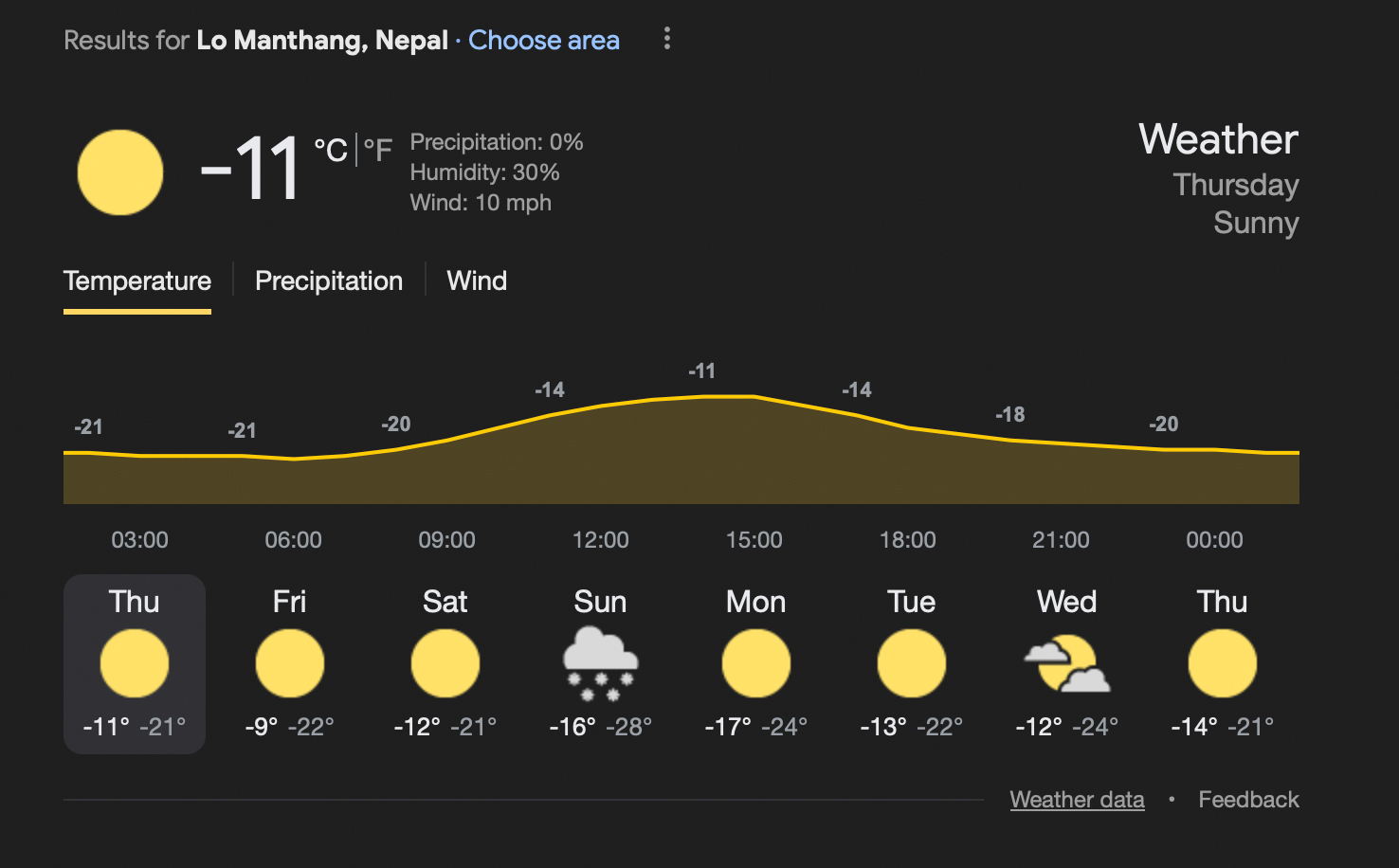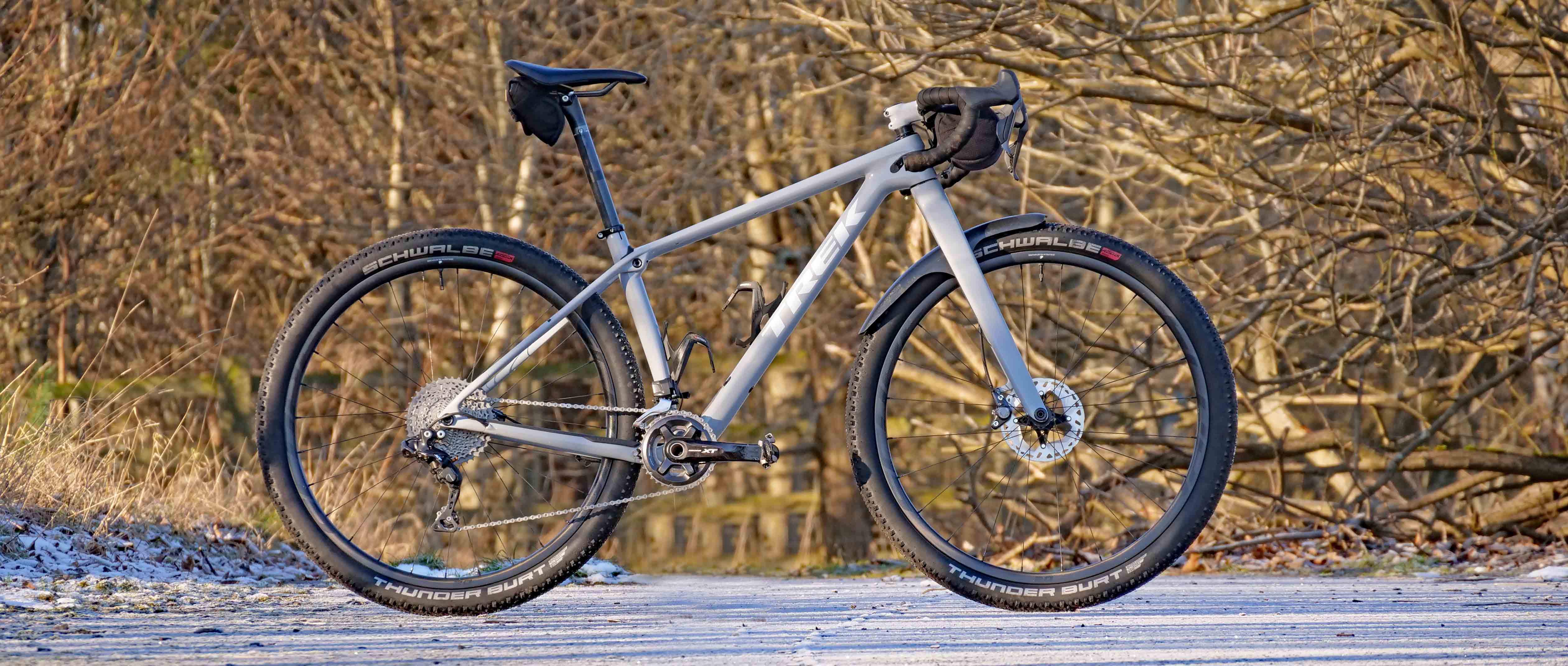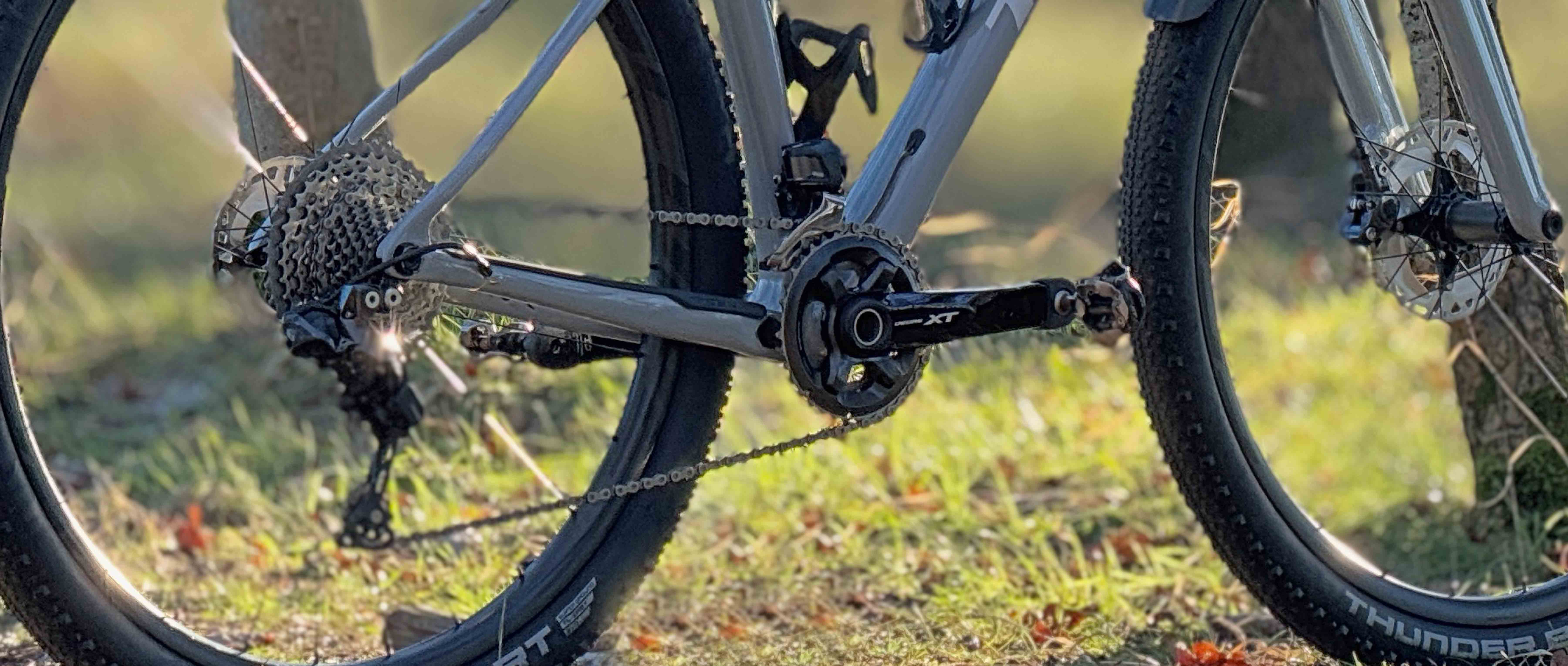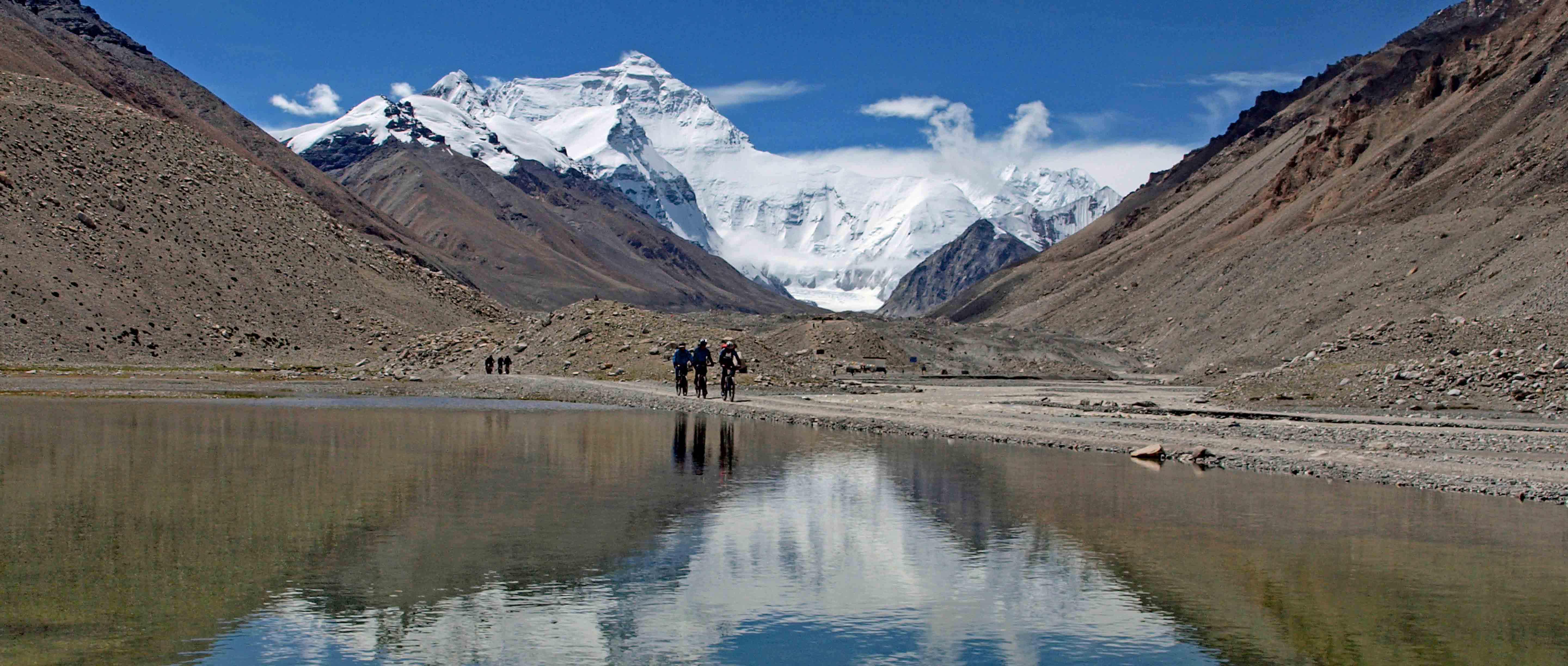In early February, Olly will be on the far side of the world, heading for some of the planet’s highest gravel roads. A small but intrepid group of gravellers are going to be taking on the Trans-Nepal gravel event which starts at nearly 5000m, right on the border of Nepal and Tibet. With temperatures forecast to be way below freezing, rough terrain, fairly basic accommodation and the remote nature of the event, proper preparation is key to having a good time. What bike to take? Which clothing to pack? How to keep the luggage below the 25kg maximum? Olly shares his top tips for gravelling on top of the world.

Recently, as I scraped a thick layer of ice of the windscreen of my van and loaded my trusty bike into the back, I couldn’t help but notice that the thermometer registered -4 degrees o C. Even dressed in multiple layers of high-quality winter clothing, including a heavy-duty down jacket I was pretty cold. How was I going to cope in Nepal when it was potentially going to be 20 degrees colder? I had spent a few hours the evening before looking at different long-term weather forecasts for Lo Manthang, the nearest town to the start point of the point of the trip. There was a decent variation in the forecasts, but all of them predicted sub-zero temperatures with the most eye-opening one predicting a wind chill factor -28 o C. Suddenly, my carefully planned clothing and kit list needed some re-working. That was seriously cold.

Bike
But first, my bike. The Trans-Nepal trip is aimed at gravel riders and won’t use the technical singletrack trails that the event organiser uses on some of their Nepali MTB trips. The trails will be mainly vehicle width and the surfaces are appropriate for a 40mm or wider gravel tyre, so you might wonder why I’m taking my #monstercross bike? There’s two simple answers – comfort and gearing. I’m going to be running Schwalbe ThunderBurt tyres (in a 29x2.25” width) and after extensive testing, my preferred pressure is 17 PSI (1.17bar) front and rear. This for me is the Goldilocks set-up where I get low rolling resistance, plenty of comfort, but with big enough tyre volume to reduce the risk of pinch punctures.

In terms of gearing, I’m running a 2x11 set-up. I’ll be using a Shimano 26-36 XT chainset with a Shimano XT 11-42 cassette. The lowest gear is insane and will practically let me ride of the side of Mount Everest. When the ‘queen’ stage of the event includes an impressive 4000m of elevation gain, I figured that a low low gear will be super handy! The biggest gear isn’t huge and I might struggle to keep up with riders on traditionally geared gravel bikes, but if I’m going fast enough that I’ve run out of gears, then I can just freewheel…..
Other bits of interesting kit – I’m using Shimano GRX Di2 shifters which are unbelievably comfy. These are the wired 11-speed versions which means one less set of batteries to worry about! Talking of which, I’m going to taking a portable battery pack and Shimano’s BCR2 charger which will let me top the internal Di2 battery up even when we are staying in super remote tea-houses (which don’t always have a reliable power supply). I’ve fitted 3T’s Supergo carbon handlebars and PRO 3.5mm bar tape which offers the perfect combination of comfort and reliability. My posterior will be kept happy with a Bontrager XXX carbon seat post and a Fizik Argo Terra X3, which after decades of being a confirmed Selle Italia saddle guy is my new “go-to” saddle of choice. I’ll be using Restrap’s fantastic cannister bar bag and saddle pack to carry all the on-bike gubbins. Navigation duties will be taken care of via a Wahoo Element Ace computer. The majority of the area where we’re riding sees very low rainfall, so mud shouldn’t be a problem, but I’m going to pack a trusty Ass Savers WinWing rear mudguard and Mudplugger front mudguard, just in case.
Top tips – bike:
- Make sure you take a spare mech hanger with you
- Check the condition of your chain/cassette/brake rotors/disc pads beforehand and replace if necessary. Bring some spare brake pads with you.
- Renew the sealant in your tubeless tyres and pack some emergency plugs
Selecting appropriate clothing for the trip is quite a dilemma. There could quite literally be a 40 o C temperature change from the start of the trip on the Nepal/Tibet border to the end of the trip on the Nepal/India border. Our baggage is limited to a maximum weight of 25 kg, which means I need to pack pretty carefully. I know that I run really cold and I’m likely to suffer much more with the lower temperatures than the warmer final section, so my clothing selection is biased towards colder temperatures. I’m going to use the well-established layering principle and use winterweight kit for the northern part of the trip. Having tried many different brands over the years, Rapha is the one that consistently fits me best, so I will be taking a selection of their clothing including deep winter tights (with a pair of their trail trousers over the top on really cold days), deep winter base layers, winterweight jerseys and a goretex jacket. Over all of this, when it’s super cold, I will be wearing one of RAB’s fantastic Mythic Alpine Light jackets which is made from a mix of down and synthetic insulation and can be worn while using a hydration pack. One my head will be a Gore skull cap and a Lazer Z1 Kineticore helmet. I’ll be carrying a couple of buffs to reduce the amount of exposed skin to a minimum. One will also double-up as a dust mask - useful on some of the sections of jeep trail.
Top tips – clothing:
- Think about how you can carry a spare layer for the start/finish of each day and to put on at food stops. You’re better off being self-sufficient just in case there isn’t a support vehicle nearby.
- If you know you run really cold, you could consider bringing some warm-up balm to apply before you get dressed.
- Concentrate on your extremities – overshoes, windproof lobster mitts, thermal skull caps all do a great job of keeping your core body temperature up.
When you have a maximum weight limit of 25 kg and a limit for the mountain flight of just 15 kg (with the rest of the luggage being transported by jeep), it focusses your attention on what is really necessary. I’ve split my packing list into on-bike and off-bike to help focus on what I need.
On bike:
- This is all the practical things that I need each day, which I’ll be carrying in my hydration pack and in the bike luggage – trail food/tools/pump/CO2 cartridges/tyre plugs/needle and thread/spare brake pads/mech hanger/first aid kit/emergency equipment/medicines/sun tan lotion/lip salve/spare layers/dry bags/hydration tabs/heart rate monitor/tubeless sealant/chain cleaning kit and wax lube.
- As I’m on the trip as a journalist, I’ll also have my camera kit – DSLR camera body and lens/ND filter/spare batteries/action camera and mounts.
Off bike:
- Overnight kit – 5 season RAB down sleeping bag and silk sleeping bag liner/ear plugs/electric travel razor/pack cubes containing each day’s riding kit/small torch/pouch for batteries/travel towel/wash kit/wet wipes.
- IT kit – laptop/plug adaptor/charge cables/SD card reader.
Top tips – kit
- Batteries don’t like getting cold, so it’s worth putting them in a small pouch inside your sleeping bag overnight and then keep them close to your body during the day.
- Take some trail food and salty snacks that you can eat during the ride and as soon as you finish each day.
- Think about whether to take a pee bottle – if it’s -20 o C outside, are you going to want to have to walk to an outside toilet in the middle of the night?

I've been fortunate enough to have travelled by bike and on foot at altitude quite a few times over the years. Each time I've gone I've learned something new (make sure your body is warm before you get into your sleeping bag at night/staying hydrated reduces cold hands and feet by improving circulation/ginger tea is great at helping relieve some of the symptoms of altitude) and I always try and build up this list and then put into place next time.
While we may not all be fortunate enough to be heading to the Himalayas this year, hopefully some of these tips will be useful for other trips away to go gravelling too!